10 Great Cinematographers
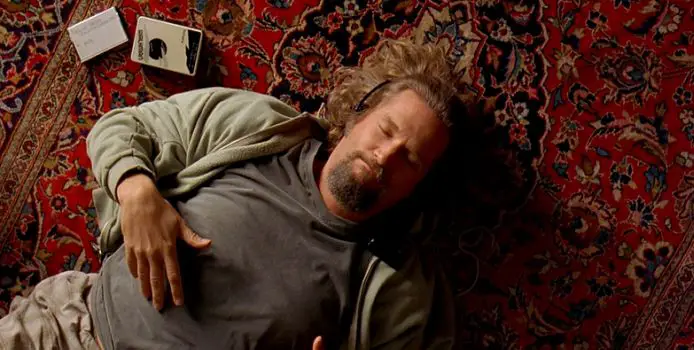
Massive film lover. Whether it's classic, contemporary, foreign, domestic, art,…
Cinematographers, or directors of photography (DP’s), handle what many think the directors accomplish in their films when it comes to visual techniques and style. However, the distinctive look many movies have has more to do with the “real” eye behind the camera, and that is usually the cinematographer. Over the years, cinematography has evolved from a craft to an art, although to be successful in the business there is a delicate balance of both. Some DP’s find their fame with innovation, others make a name for themselves by defining their visual artistry.
Regardless, these lesser acknowledged members of the film industry are the undervalued talents that make many popular directors visions come true. Here are ten cinematographers that deserve to be all the praise they get.
Gregg Toland
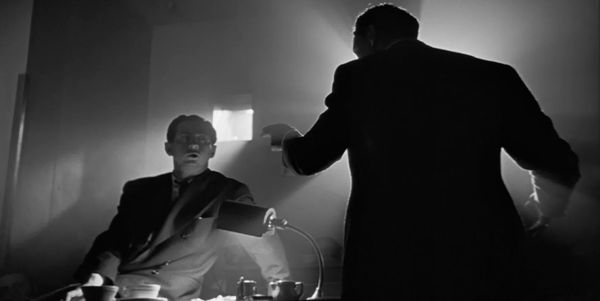
In the late twenties, Gregg Toland established a career for himself at the dawn of the studio era in 1928 when sound was introduced to film. As a cinematographer Toland initiated a myriad of technical innovations (which at the time were discredited) that are now common in the language of filmmaking. Along with transforming filmic technique Toland was endowed with a level of artistry that allowed him to enjoy a lengthy career during the studio era.
His most famous work happens to be on Orson Welles’ legendary film Citizen Kane. Citizen Kane is held as one of the most important films ever made, and one of the key elements that place it so high is the stunning cinematography. Toland adjusted the depth of field in his shots enabling the deep focus technique (when foreground and background are equally visible), a technique that he had been experimenting with on previous features but refined while working on Citizen Kane.
Among the wide margin of innovation employed on the set of Citizen Kane were the use of technicolor lights (to emphasize the black and white photography), floor lighting, coated lenses, split focus lenses, and double exposures. Although Citizen Kane wasn’t an instant classic, Toland’s career as a cinematographer was firmly set, although his career came to an end seven years later in 1948 after dying from a heart attack.
Gregg Toland enjoyed a lengthy and prosperous career as one of cinemas most prolific cinematographers whose various innovations, inventions, and influence are common practice today.
Sven Nykvist
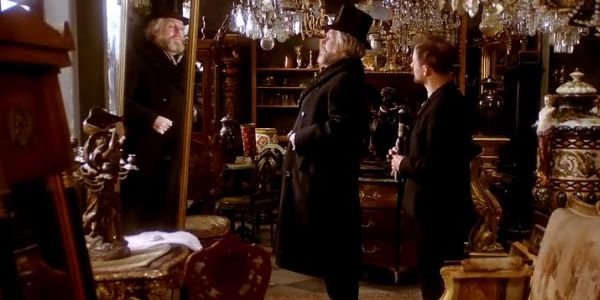
Sven Nykvist is mostly known for his creative partnership with master filmmaker Ingmar Bergman (their collaboration extends over twenty films), and had a precise eye for manipulating natural lighting into intensely assertive personal images that elicit deeply resounding emotional responses.
After achieving a daring 180 degree shot of Ake Gronberg holding a gun in Bergman’s Sawdust and Tinsel it made such an impression on Bergman that he wished Nykvist would work on all of his films. His creative partnership with Bergman isn’t the only trophy partnership to his long career, Nykvist shot for great filmmakers from all around the world. Other notable collaborations with luminaries in cinema such as Louis Malle, Roman Polanski, Jan Troell, Alf Sjoberg, Richard Attenborough, Bob Raefelson, Woody Allen, Andrei Tarkovsky, Volker Schlondorf, Bob Fosse, Philip Kaufman, and Lasse Halstrom.
His body of work is massive, and his status of as a cinematographer is extraordinary as he is considered one of the most important artists in cinematic history. The documentary The Light Keeps Me Company (directed by his son Carl-Gustav Nykvist) provides a personal look into his life and work. While it looks at the man behind the camera, it’s not directly a compilation of clips from his credits as a cinematographer.
Vilmos Zsigmond & Lazlo Kovács
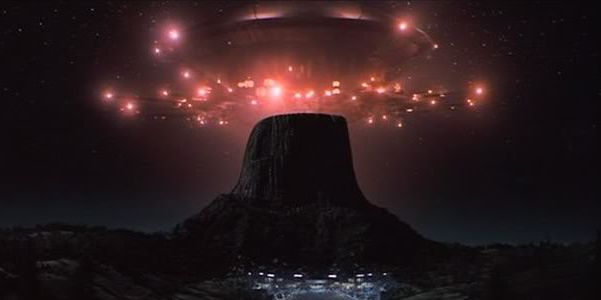
Easily one of the most important names in the movie business is the Hungarian born Vilmos Zsigmond (close friend and contemporary of Kovács) made name for himself alongside the new Hollywood movement in the late sixties and is still working to this day. Both Kovács and Zsigmond (like many of the directors of the new Hollywood) cut their teeth by finding work with movie mogul Roger Corman, after fleeing Hungary in order to sell their coverage of the Hungarian Revolution of 1956. After fleeing Europe they took residence in the States and found work in the movie business.
After working on a number of B movies (The Sadist (1963), Psych-Out, Horror of the Blood Monsters) both Zsigmond and Kovács found themselves behind the camera with game-changing new wave directors such as Robert Altman, Bob Raefelson, Michael Cimino, Brian DePalma, Steven Spielberg, Dennis Hopper, Peter Bogdonavich and Hal Ashby.
Zsigmond’s stand out titles among many include McCabe & Mrs. Miller, Deliverance, The Long Goodbye, Close Encounters of the Third Kind, The Deer Hunter, Heaven’s Gate, all the way to working on present day projects whose projects are in development.
László Kovács’ career was tragically cut short in 2007. His filmography, however, is just as expansive as Zsigmond’s while even lending his talented eye to more commercially viable films throughout his later career. Working up from the new Hollywood movement some of his stand out titles include Easy Rider, Targets, Five Easy Pieces, The King of Marvin Gardens, Paper Moon, Shampoo, My Best Friends Wedding, and Miss Congeniality.
Their place as monumental cinematographers is solidified, as is that of many of the directors they worked for, by implementing what many would refer to as “radical” techniques that are commonly used today. Employing techniques such as flashing film negatives (in order to give the stock a grainy look, used in McCabe & Mrs. Miller) diffusion filters, manipulating natural and artificial light sources, location shooting, as well as improvisational methods that mirrored the climate of the rebellious new Hollywood movement.
Zsigmond and Kovács were key figures in solidifying a radical era in filmmaking, leaving big studios behind and being a part of the renegade spirit that permeated the film industry of the sixties and seventies.
Christopher Doyle
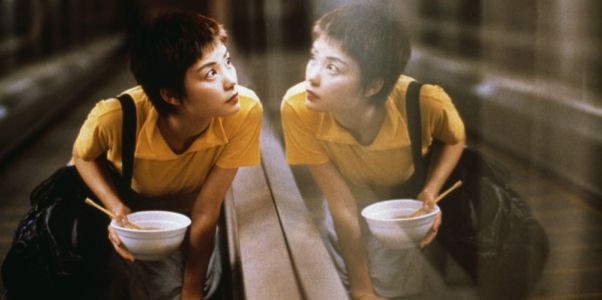
Australian born jack-of-all-trades Christopher Doyle has credits as an actor, director, writer, producer. However, his career as a cinematographer is unlike many of those who practice the trade, moving from Australia to India, Israel, and then to China where he would be a staple DP for many Hong Kong productions.
His first film as cinematographer was for Edward Yang’s 1983 film That Day on the Beach where he won the best cinematographer award at the Asia-Pacific Film Festival. His best known collaborations would be with famous Hong Kong director Wong Kar-wai, which started in 199o with Wong’s Days of Being Wild. For this film, Doyle used contrasting light sources, and shooting fast motion shots with a slow shutter speed (step printing) giving the film a wavy, distorted slow motion that not only elevates the atmosphere of their films but is referred to as “the Wong Kar-wai aesthetic”.
His work with Wong kar-wai bears the sign of integral cinematic artistry. Following Days of Being Wild, they also collaborated on Chungking Express, Ashes of Time, Fallen Angels, Happy Together, In the Mood for Love, and their final film together, 2046. Other innovative Hong Kong collaborations include the dynamic color spectrum in Zhang Yimou’s Hero, Fruit Chan’s modern horror chiller Dumplings, and Pen-ek Rattanarueang’s two art house masterpieces Last Life in the Universe and Invisible Waves.
Christopher Doyle hasn’t worked exclusively in China as he is also credited as cinematographer for Neil Jordan, Gus Van Sant, M. Night Shamalan, Philip Noyce, John Favreau, Jim Jarmusch, and James Ivory. It’s impressive when a cinematographer can effortlessly navigate from experimental art house to commercial fare (e.g. Wong Kar-wai’s 1997 Happy Together compared toGus Van Sant’s 1998 remake of Psycho) and retain his aesthetic style – and between cultures at that. His style is unique and his work is recognized worldwide.
Gordon Willis

With a nickname like “The Prince of Darkness”, you wouldn’t think Gordon Willis would have a very good reputation. Fortunately, the derivation of his name comes from his reputation of actuality lighting, one of the many barriers he as a cinematographer helped break during his long career behind the camera.
Starting out in the US Air Force making instructional movies, after his first two motion pictures (End of the Road and Loving), Gordon Willis earned attention photographing Hal Ashby’s directorial debut The Landlord. Willis would get major recognition working with famed director Alan J. Pakula on the 1972 film Klute. Gordon’s (now trademark) dark photography, specifically during the films final chase scene where you can see Willis’ eye for aesthetic realism, left impressionist noir ornamentation behind. Willis favored minimal light, and although early in his career, some consider this to be Willis’ best work.
Following Klute, Gordon Willis shot the monumental classic The Godfather, and followed that with another crackling political thriller by Pakula, The Parallax View. Next project was the second installment in Coppola’s gangster saga, Godfather II, where his reputation continued to solidify as a premier cinematographer.
When, in a play against form, Woody Allen announced that he wanted Willis to shoot his upcoming film Annie Hall, people couldn’t but wonder why Woody would want the “Prince of Darkness” to direct a comedy? While many doubted Woody’s choice for a cinematographer, his collaboration with Willis expanded the cinematic terms of what a comedy could be as Annie Hall revealed a new form of serious comic cinema. Willis and Allen followed Annie Hall with Manhattan, and utilizing Panavision aspect ratio and black and white film, Allen and Willis made the titular city a character in the film. After Manhattan, Gordon Willis would shoot five more films for Woody Allen (Stardust Memories, Zelig, A Midsummer Nights Sex Comedy, Broadway Danny Rose, The Purple Rose of Cairo) many of which some consider to be Allen’s best work.
Although some were slow to recognize Gordon Willis as a premier cinematographer, his influence can be seen not only by the directors he worked with, but by contemporary filmmakers working today.
Peter Andrews (a.k.a. Steven Soderbergh)
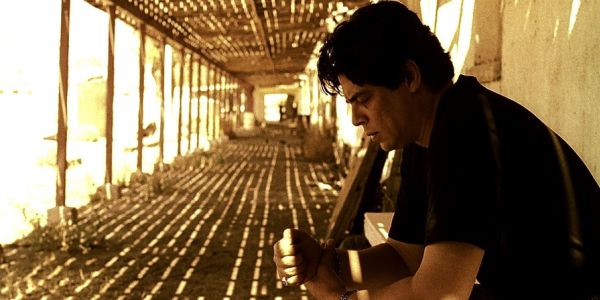
If the name doesn’t sound familiar, it’s because it’s made up: Peter Andrews is Soderbergh’s own pseudonym, since he acts as both director and cinematographer on many of his projects. Soderbergh’s career has been in the fast lane since his debut film Sex, Lies, and Videotape hit the ground running back in 1989. His many projects include Schizopolis, Traffic, Oceans Eleven, Solaris, Oceans Twelve, The Good German, Oceans Thirteen, Che Parts 1 & 2, The Girlfriend Experience, The Informant!, Contagion, Magic Mike, Side Effects, and Behind the Candelabra.
The Oscar-winning film Traffic made use of hand held camera work and multiple diffusion filters. His WWII Noir thriller The Good German was actually shot on color film stock (enabling the use of green screen effects, and faster film speeds) and then digitally rendered to black and white, and Soderbergh has been an outspoken advocate of digital photography.
Leading his ambitious two-part film Che, the stalwart Soderbergh started principal photography with the (at the time) uncertain RED One digital camera, although he started shooting with a prototype (Soderbergh admits that he had to literally cool the cameras down with ice due to overheating), the results are spectacular and his continued use of digital photography has advanced its use in modern cinema ushering new possibilities in filmmaking.
Raoul Coutard
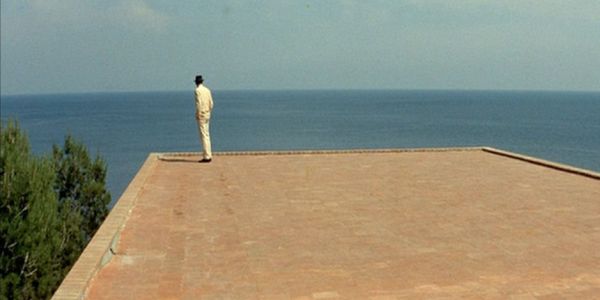
While journeying through the French New Wave movement you might have come across this name more than a few times. Although Raoul Coutard‘s name doesn’t resound with the legendary ring that follows the utterance of the directors he worked with (Godard, Truffaut, Demy, Gavras, Rouch, Morin), his contribution to the nouvelle vougue is just as profound as he had a direct hand in redefining the boundaries of cinema.
Probably the most hesitant of the legendary cinematographers, Coutard was a chemist-turned-war photographer during the French Indochina conflict, then did freelance work for Look and Paris Match Magazine. Never having used a movie camera before, he thought he was approached to take production stills, he unknowingly shot the film The Devils Pass.
As the French New Wave took off, so did Coutard’s career as a prolific cinematographer, breaking new ground with Jean Luc Godard’s breakthrough title Breathless. Following Breathless, Coutard became the “go to” cinematographer for many of the front runners of the French New Wave, but his collaboration with Jean Luc Godard would be the most long-lasting and fruitful collaborations. Coutard is credited for shooting over a dozen films with Godard, including classics such as Les Caribiniers, Le Petit Soldat, Alphaville, Pierrot le Fou, Weekend, and the incisive technicolor classic Contempt.
Other notable credits include Francois Truffaut’s Shoot the Piano Player, Jules and Jim, and The Soft Skin, Jacques Demy’s Lola, Jean Rouch and Edgar Morin’s Chronicle of a Summer as well as Costa-Gavras’ politically charged Z, and The Confession. Raoul Coutard’s career may not be as expansive as some of the other cinematographers featured, however, his participation was crucial in creating one of cinemas most pivotal movements.
Jack Cardiff
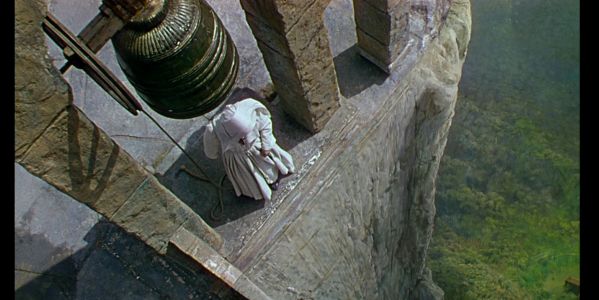
With over eighty years in the film business working mainly as a DP he had worked his way through the business as a child actor, clapper boy, to second unit cameraman for Michael Powell and Emeric Pressburger’s classic film The Life and Death of Colonel Blimp. Michael Powell immediately recognized Cardiff’s talent and requested he photograph their next project, A Matter of Life and Death aka Stairway to Heaven . The film was a success and is ranked twentieth in the BFI’s 100 Best 100 Films List in 2004. Cardiff continued to conjure images of breathtaking beauty in the following years with Powell and Pressburger, including classics such as Black Narcissus and The Red Shoes.
Following his work with The Archers (Powell and Pressburger’s monicker), Cardiff was a commodity in the film world as he went on to work with cinematic titans such as Henry Hathaway, John Huston, King Vidor, Alfred Hitchc*ck, Joseph L. Mankiewicz, Laurence Olivier, Richard Fleischer, John Irvin. He continued to be a sought-after talent working in film until he was 92 years old, two years before his death in 2009 at 94 years of age.
Jack Cardiff became the most utilized technician when the three strip technicolor process was prospering, his superlative skill set made him one of Technicolor’s benefactors elevating studio movies from the forties and fifties with an air of artistry people had yet to see in the film business.
His craft and skill are widely recognized in the film world, he received and honorary Oscar in 2001. Seventeen years in the making Craig McCall’s documentary Cameraman: The Life and Work of Jack Cardiff is an in depth look at the Cardiff’s career with interviews and footage galore, an informative compliment to a masterful career if you’re curious about learning more.
Emmanuel Lubezki
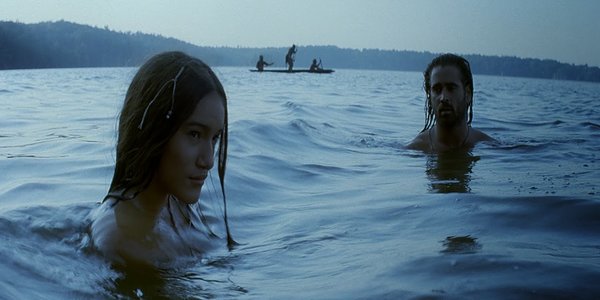
Probably the most sought after talent working in the business today, Emmanuel Lubezki has earned himself a place in the upper echelon of great cinematographers. And he’s earned himself Oscar nominations, wins, and countless other awards and accommodations.
Cinephiles are tapping their feet waiting for the upcoming Knight of Cups release, his latest collaboration with self-stylized maverick auteur Terrence Malick, following their previous collaborations (The New World, The Tree of Life, To the Wonder). However, there is plenty of beautiful images in his oeuvre to keep us captivated until Knight of Cups arrives, like the highly anticipated The Revenant as well as the recently announced musical project Weightless.
His first credit as cinematographer was with frequent collaborator and fellow Mexican Alfonso Cuarón for Sólo Con Tu Pareja (which happened to be Cuarón’s debut feature film too). This film is evidence that these two filmmakers were not only talented, but destined to work together and their five following collaborations stand out the most in Lubezki’s many accolades. It wasn’t until Alfonso Cuarón’s daring international hit Y tu mamá también that Lubezki would define his more expressive style by openly exercising his proclivity for long uninterrupted takes, free-flowing handheld photography and contrasting light sources.
It seems that their collaboration enabled more artistic freedom for Lubezki to hone his style, which has put his career on overdrive as modern cinemas foremost DP. Cuarón’s following film Children of Men features some of Lubezki’s most daring and technically extraordinary work. Lubezki’s bold techniques complimented Cuarón’s bold film resulting in a strong and unique cinematic experience.
Alfonso Cuarón and Emmanuel Lubezki would go one step beyond to the final frontier with their hit film Gravity when Lubezki finally earned his first Academy Award, only to consecutively win another Oscar the following year for Alejandro González Iñárritu’s best picture winner Birdman or (The Unexpected Virtue of Ignorance) at the 2015 ceremony.
Roger Deakins
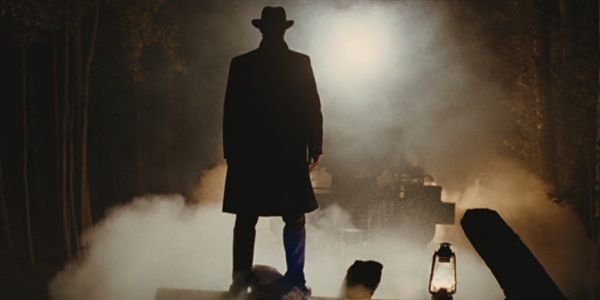
Roger Deakins is one of the most decorated cinematographers in the business. Deakins was educated at The National Film and Television School in Buckinghamshire, and after graduating he found work in documentaries and short film. His first major feature as a DP in 1984 showed great promise, shooting Michael Radford’s rendition of George Orwell’s Nineteen Eighty-Four. Two-years later his reputation grew after shooting Alex Cox’s cult darling Sid & Nancy.
By 1991 Deakin’s was well on his way to the forefront of the film world, and a creative partnership with the erratic talents of Joel and Ethan Coen. Though Barry Sonenfeld shot the Coen’s first three films, after Miller’s Crossing he went on to direct feature films – as Josh Olson once said, “once you’ve shot Miller’s Crossing there’s really nowhere left to go, so obviously he became a director”. Subsequently, Roger Deakins was the DP for the Coen’s Barton Fink and all of their following films leading right up to their latest film (in post production) Hail, Caesar!.
Roger Deakins is known to many as the Coen’s recurring cinematographer but of course his ranging credits are staggering, working with directors such as Edward Zwick, Martin Scorsese, David Mamet, Sam Mendes, and Andrew Dominik.
With twelve Oscar nominations, ASC, BAFTA, and Independent Spirit Awards nominations and considerations, Deakins has the credits to be considered one of the great artists of film, although he readily admits that his purpose is to serve the directors vision in lieu of his own creative prowess. His professionalism and visual sense has established Roger Deakins as one of the many great cinematographers.
Conclusion
The moving image has captivated us for over a century now, and cinematographers have expanded the scope of our visual conception over the years, and will continue to do so. Whether it’s the expanding of color photography in the case of Jack Cardiff who became the leading expert in Technicolor, or technical and visual transformations in the case of Gregg Toland, these individuals have donated a breadth of expansion to our cinematic perception.
Compiling lists, and ranking people can be difficult because of the expansive nature of film it is hard to compile an accurate list without feeling like you’ve left someone out. If you feel like there’s anyone else that has been left out, overlooked or forgotten, please let us know!
Honorable Mentions
Robert Elswit – Filmography
Dante Spinotti – Filmography
Janusz Kamińsk – Filmography
Barry Sonenfeld – Filmography
Haskell Wexler – Filmography
Vittorio Storaro – Filmography
Freddie Francis – Filmography
Néstor Almendros – Filmography
(top image: The Big Lebowski – source: Gramercy Pictures – DP: Roger Deakins)
Does content like this matter to you?
Become a Member and support film journalism. Unlock access to all of Film Inquiry`s great articles. Join a community of like-minded readers who are passionate about cinema - get access to our private members Network, give back to independent filmmakers, and more.
Massive film lover. Whether it's classic, contemporary, foreign, domestic, art, or entertainment; movies of every kind have something to say. And there is something to say about every movie.













